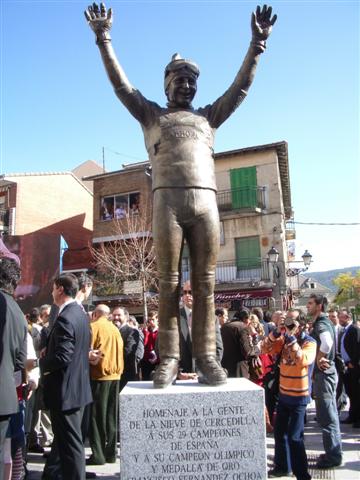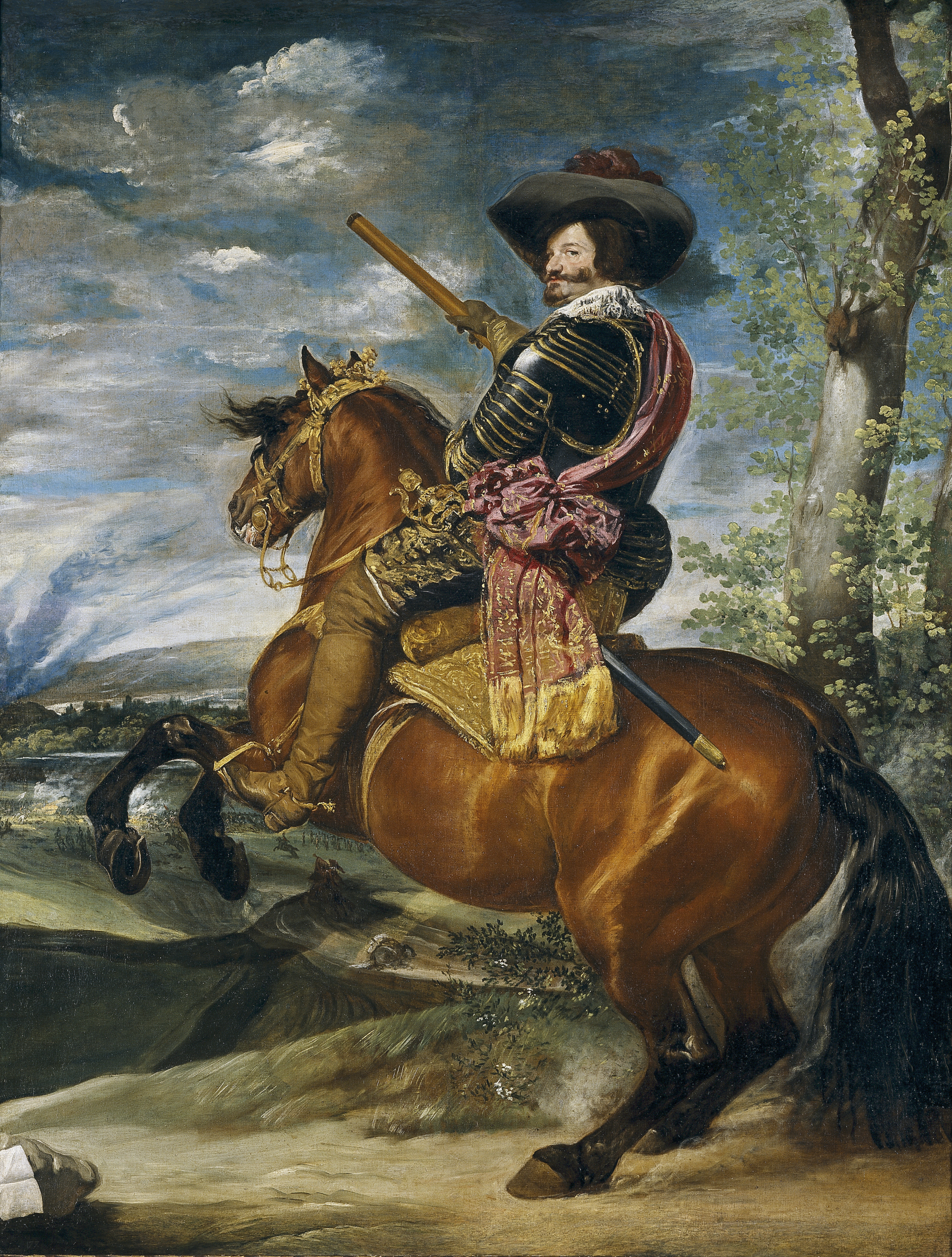|
El Buscón
''El Buscón'' (full title ''Historia de la vida del Buscón, llamado Don Pablos, ejemplo de vagamundos y espejo de tacaños'' (literally: History of the life of the Swindler, called Don Pablos, model for hobos and mirror of misers); translated as ''Paul the Sharper or The Scavenger'' and ''The Swindler'') is a picaresque novel by Francisco de Quevedo. It was written around 1604 (the exact date of completion is not known) and published in 1626 by a press in Zaragoza (without Quevedo's permission), though it had circulated in manuscript form previous to that. Purpose of the work The only novel written by Quevedo, it is presented in the first person singular and chronicles the adventures of Don Pablos, a ''buscón'' or swindler. Pablos sets out in life with two aims: to learn virtue and to become a ''caballero'' (gentleman). He fails miserably in both. ''El Buscón'' has been considered a profound satire on Spanish life, but also as a literary exercise for Quevedo, in that he was ... [...More Info...] [...Related Items...] OR: [Wikipedia] [Google] [Baidu] |
Francisco De Quevedo
Francisco Gómez de Quevedo y Santibáñez Villegas, Knight of the Order of Santiago (; 14 September 1580 – 8 September 1645) was a Spanish nobleman, politician and writer of the Baroque era. Along with his lifelong rival, Luis de Góngora, Quevedo was one of the most prominent Spanish poets of the age. His style is characterized by what was called ''conceptismo''. This style existed in stark contrast to Góngora's ''culteranismo''. Biography Quevedo was born on 14 September 1580 in Madrid into a family of '' hidalgos'' from the village of Vejorís, located in the northern mountainous region of Cantabria. His family was descended from the Castilian nobility. Quevedo's father, Francisco Gómez de Quevedo, was secretary to Maria of Spain, daughter of emperor Charles V and wife of Maximilian II, Holy Roman Emperor, and his mother, Madrid-born María de Santibáñez, was lady-in-waiting to the queen. Quevedo matured surrounded by dignitaries and nobility at the royal court ... [...More Info...] [...Related Items...] OR: [Wikipedia] [Google] [Baidu] |
Germanía
Germanía () is the Spanish term for the argot used by criminals or in jails in Spain during 16th and 17th centuries. Its purpose is to keep outsiders out of the conversation. The ultimate origin of the word is the Latin word , through Catalan (brother) and ("brotherhood, guild"). Some documentation for it occurs in picaresque works as early as the Spanish Golden Century, such as in Quevedo's ''El Buscón''. Some writers used it in poetry for comical effect. After the arrival of the Romani people and their frequent imprisonment, ''germanía'' incorporated much vocabulary from Romany and its descendant, the '' caló'' jargon. As time passed, several words entered popular use and even standard Spanish, losing their value for secrecy. ''Germanía'' survives today in the ''cheli'' jargon. War of the Germanías The term ''germanía'' ("brotherhood" in Catalan—compare with Galician ''irmandade'' and Spanish ''hermandad'') originated from the name of a revolt against the loca ... [...More Info...] [...Related Items...] OR: [Wikipedia] [Google] [Baidu] |
Cercedilla
Cercedilla () is a municipality in the Community of Madrid, in central Spain. It is located in the Sierra de Guadarrama. Background It was the hometown of Francisco Fernández Ochoa (1950–2006), an alpine ski racer known for being the first (and only) Spaniard to win a gold medal at the Winter Olympics. He won the slalom in 1972 in Japan. Less than two weeks before his death from cancer, a statue was erected in his honor in Cercedilla. Many of his siblings were also on the national ski team; his sister Blanca won an Olympic bronze medal in 1992 in France. Public transport Bus Urban lines * Line 1: Funefría hospital - High School Interurban lines * Line 680: Collado Villalba (hospital) - Cercedilla * Line 684: Madrid (Moncloa) - Cercedilla (by Guadarrama) Train Cercedilla has a train station which gives service to two Cercanías lines, line C-8 and C-9. Line C-8 connects Cercedilla with Madrid, Alcalá de Henares and Guadalajara, while the C-9 line has a ... [...More Info...] [...Related Items...] OR: [Wikipedia] [Google] [Baidu] |
Hermit
A hermit, also known as an eremite (adjectival form: hermitic or eremitic) or solitary, is a person who lives in seclusion. Eremitism plays a role in a variety of religions. Description In Christianity, the term was originally applied to a Christian who lives the eremitic life out of a religious conviction, namely the Desert Theology of the Old Testament (i.e., the 40 years wandering in the desert that was meant to bring about a change of heart). In the Christian tradition the eremitic life is an early form of monastic living that preceded the monastic life in the cenobium. In chapter 1, the Rule of St Benedict lists hermits among four kinds of monks. In the Roman Catholic Church, in addition to hermits who are members of religious institutes, the Canon law (canon 603) recognizes also diocesan hermits under the direction of their bishop as members of the consecrated life. The same is true in many parts of the Anglican Communion, including the Episcopal Church in the Un ... [...More Info...] [...Related Items...] OR: [Wikipedia] [Google] [Baidu] |
Expulsion Of The Moriscos
The Expulsion of the Moriscos ( es, Expulsión de los moriscos) was decreed by King Philip III of Spain on April 9, 1609. The Moriscos were descendants of Spain's Muslim population who had been forced to convert to Christianity. Since the Spanish were fighting wars in the Americas, feeling threatened by the Turks raiding along the Spanish coast and by two Morisco revolts in the century since Islam was outlawed in Spain, it seems that the expulsions were a reaction to an internal problem of the stretched Spanish Empire. Between 1609 through 1614, the Crown systematically expelled Moriscos through a number of decrees affecting Spain's various kingdoms, with varying levels of success. Although initial estimates of the number expelled such as those of Henri Lapeyre range between 275,000 and 300,000 Moriscos (or 4% of the total Spanish population), the extent and actual success of the expulsion order in purging Spain of its Moriscos has been increasingly challenged by modern histori ... [...More Info...] [...Related Items...] OR: [Wikipedia] [Google] [Baidu] |
Arbitrista
{{italicize title The ''arbitristas'' were a group of reformist thinkers in late 16th and 17th century Spain concerned about the decline of the economy of Spain and proposed a number of measures to reverse it. ''Arbitristas'' directed analyses of problem and proposals ("memorials") for their solution to the king, asking him to take a particular action in the economic or political sphere. The increase in the production of proposals and analyses outlining solutions to the perceived problems of the empire were at a pace comparable to the inflation in the real economy during the price revolution of the sixteenth century and increased further with the crisis of the seventeenth century. General description ''Arbitrismo'' developed mainly in Castile during the second half of the sixteenth century and the seventeenth century. It is related intellectually to the School of Salamanca. ''Arbitrismo'' is part of the first economic literature worthy of such a name, simultaneously and largely bas ... [...More Info...] [...Related Items...] OR: [Wikipedia] [Google] [Baidu] |
Hazing
Hazing (American English), initiation, beasting (British English), bastardisation (Australian English), ragging (South Asian English) or deposition refers to any activity expected of someone in joining or participating in a group that humiliates, degrades, abuses, or endangers them regardless of a person's willingness to participate. Hazing is seen in many different types of social groups, including gangs, sports teams, schools, cliques, universities, military units, prisons, fraternities and sororities, and even workplaces in some cases. The initiation rites can range from relatively benign pranks to protracted patterns of behavior that rise to the level of abuse or criminal misconduct. Hazing is often prohibited by law or institutions such as colleges and universities because it may include either physical or psychological abuse, such as humiliation, nudity, or sexual abuse. Terms In some languages, terms with a religious theme or etymology are preferred, such as baptism ... [...More Info...] [...Related Items...] OR: [Wikipedia] [Google] [Baidu] |
Alcalá De Henares
Alcalá de Henares () is a Spanish city in the Community of Madrid. Straddling the Henares River, it is located to the northeast of the centre of Madrid. , it has a population of 193,751, making it the region's third-most populated Municipalities in Spain, municipality. Predated by earlier settlements (''oppidum, oppida'') on the left bank of the Henares, the city has its origins in the :es:Complutum, Complutum settlement founded in Roman times on the right bank (north) of the river, that became a bishopric seat in the 5th century. One of the several Muslim citadels in the Middle Mark of al-Andalus (hence the name ''Alcalá'', a derivative of the Arabic term for citadel) was established on the left bank, while, after the Christian conquest culminated circa 1118, the bulk of the urban nucleus returned to the right bank. For much of the late middle-ages and the early modern period before becoming part of the province of Madrid, Alcalá de Henares was a seigneurial estate of the Roma ... [...More Info...] [...Related Items...] OR: [Wikipedia] [Google] [Baidu] |
Segovia
Segovia ( , , ) is a city in the autonomous community of Castile and León, Spain. It is the capital and most populated municipality of the Province of Segovia. Segovia is in the Inner Plateau (''Meseta central''), near the northern slopes of the Sistema Central range and on a bend of the Eresma river. The city is famous for its historic buildings including three main landmarks: its midtown Roman aqueduct, its cathedral (one of the last ones to be built in Europe following a Gothic style), and the medieval castle, which served as one of the templates for Walt Disney's Cinderella Castle. The city center was declared of World Heritage by UNESCO in 1985. Etymology The name of Segovia is of Celtiberian origin. Although historians have linked its old name to ', the recent discovery of the original Roman city in the nearby village of Saelices discarded this possibility. The name of "Segovia" is mentioned by Livy in the context of the Sertorian War. Under the Romans and Moors, the ... [...More Info...] [...Related Items...] OR: [Wikipedia] [Google] [Baidu] |
Morisco
Moriscos (, ; pt, mouriscos ; Spanish for "Moorish") were former Muslims and their descendants whom the Roman Catholic church and the Spanish Crown commanded to convert to Christianity or face compulsory exile after Spain outlawed the open practice of Islam by its sizeable Muslim population (termed ''mudéjar'') in the early 16th century. The Unified Portuguese and Spanish monarchs mistrusted Moriscos and feared that they would prompt new invasions from the Ottoman Empire after the Fall of Constantinople. So between 1609 and 1614 they began to expel them systematically from the various kingdoms of the united realm. The most severe expulsions occurred in the eastern Kingdom of Valencia. The exact number of Moriscos present in Spain prior to expulsion is unknown and can only be guessed on the basis of official records of the edict of expulsion. Furthermore, the overall success of the expulsion is subject to academic debate, with estimates on the proportion of those who avoid ... [...More Info...] [...Related Items...] OR: [Wikipedia] [Google] [Baidu] |
Witch
Witchcraft traditionally means the use of Magic (supernatural), magic or supernatural powers to harm others. A practitioner is a witch. In Middle Ages, medieval and early modern Europe, where the term originated, accused witches were usually women who were believed to have used Black magic, malevolent magic against their own community, and often to have communed with evil beings. It was thought witchcraft could be thwarted by Apotropaic magic, protective magic or counter-magic, which could be provided by cunning folk or folk healers. Suspected witches were also intimidated, banished, attacked or killed. Often they would be formally prosecuted and punished, if found guilty or simply believed to be guilty. European witch-hunts and witch trials in the early modern period led to tens of thousands of executions. In some regions, many of those accused of witchcraft were folk healers or midwife, midwives. European belief in witchcraft gradually dwindled during and after the Age of Enl ... [...More Info...] [...Related Items...] OR: [Wikipedia] [Google] [Baidu] |
Prostitute
Prostitution is the business or practice of engaging in sexual activity in exchange for payment. The definition of "sexual activity" varies, and is often defined as an activity requiring physical contact (e.g., sexual intercourse, non-penetrative sex, oral sex, etc.) with the customer. The requirement of physical contact also creates the risk of transferring diseases. Prostitution is sometimes described as sexual services, commercial sex or, colloquially, hooking. It is sometimes referred to euphemistically as "the world's oldest profession" in the English-speaking world. A person who works in this field is called a prostitute, or more inclusively, a sex worker. Prostitution occurs in a variety of forms, and its legal status varies from country to country (sometimes from region to region within a given country), ranging from being an enforced or unenforced crime, to unregulated, to a regulated profession. It is one branch of the sex industry, along with pornography, stri ... [...More Info...] [...Related Items...] OR: [Wikipedia] [Google] [Baidu] |








